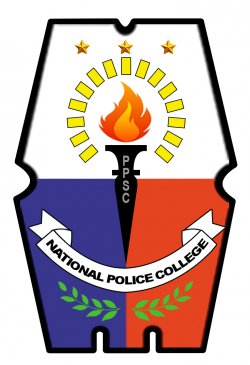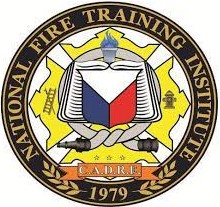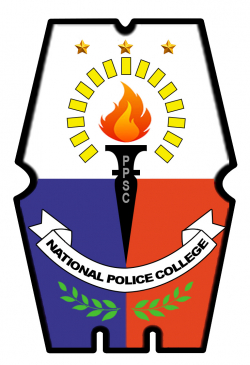Adoption of "Babae Ako, Isang Bayani at Ehemplo" Program on the Elimination of Violence Against Women and Children in Lucena City

Type
Thesis
Authors
PCPT ATIENZA ALICE YUZON PCPT CARPENTERO OLGA BELLO ( PCPT RAZA MARIBEL MARQUEZ PCPT TAPULAYAN DELILAH LAURELES )
Category
PSOAC
[ Browse Items ]
Publication Year
2023
Abstract
Introduction
Violence against women is one of the most pervasive forms of human rights abuse in the world today. It cuts across social and economic situations, race, and culture affecting the young and the old women and their children are suffering from violence.
The United Nations Declaration on the Elimination of Violence Against Women defined VAW as "any act of gender-based violence that results in, or is likely to result in, physical, sexual or psychological harm or suffering to women, including threats of such acts, coercion or arbitrary deprivation of liberty, whether occurring in public or in private life."
In line with the country's commitment to achieving Sustainable Development Goals, the Philippines has numerous laws that address violence against women. The 1987 Constitution of the Philippines lays out several provisions for women, which are the basis for protecting their rights and recognizing their value. The Philippines is also a signatory to the major international human rights treaties, including the Convention on the Elimination of All Forms of Discrimination against Women (CEDAW) and its Optional Protocol, as well as the Convention on the Rights of the Child (CRC). To showcase its commitment to CEDAW, the Philippine government passed Republic Act 9710 (RA 9710) or the Magna Carta of Women. It is the local translation of CEDAW provisions and aims to recognize, protect, fulfill, and promote the human rights of Filipino women through elimination of discrimination. The Republic Act 9262 (RA 9262), also known as the Anti-Violence Against Women and their Children Act, or the Anti-VAWC Law, is a more specific law that addresses violence against women. This law criminalizes violence against women and their children, and outlines protective measures for women and appropriate sanctions for perpetrators (Foundation for Media Alternatives [FMA] & Association for Progressive Communication [APC]. 2013: Santos, 2009).
In addition, several other laws also address different issues of gender-based violence: Anti-Trafficking in Persons act or RA 9208. Anti- Rape Law or RA 8353, Rape Victim Assistance and Protection Act or RA 8505, Anti-Sexual Harassment Act or RA 7877, Anti-Mail Order Bride or RA 6955, and the most recent Safe Spaces Act or RA 11313.
The Anti-VAWC Law includes various services to protect victims of violence against women. It recognizes violence against women and their children as a public offense, which allows any citizen with knowledge of the crime to file a complaint. To make reporting more accessible at the local level, it requires every police precinct in the country to have a women's desk, and that a woman police officer must investigate rape cases. Additionally, every province and city is required to have a rape crisis center. It also entitles the victims to support from various government services, including legal assistance, medical assistance, temporary shelter, counseling and psychosocial services, recovery and rehabilitation programs, and livelihood assistance (SALIGAN, 2007). However, the study by Santos (2009) on the implementation of the Anti-VAWC Law emphasizes the lack of public awareness and understanding of the law, for both citizens and public officials. Some participants in the study mentioned cultural notions that hinder the implementation of the law, such as the idea that intimate partner violence is normal in a relationship and a private matter, and women are at fault for the violence because it is their role to keep the harmony in a relationship and in the family, or that their abusive partner will eventually come to his senses once his anger subsides. However, Article 5 of CEDAW states that the state must address social and cultural norms that promote discrimination against women. These include cultural practices and stereotypes that foster the inferiority of women (United Nations. 1979).
Lucena City is the capital of Quezon Province. It is classified as a highly urbanized city, and sustains a population of 278,924 as of the 2020 census, divided into 33 barangays. Although geographically a part of Quezon Province, it is politically independent of the latter.
Source: https://www.google.com/maps/@13.9390656.121.6291748,13z?hl=en&entry=ttu
In Lucena City, there is an increasing number of cases of VAWC from FY 2020-2022, this manifests a concern that regulates the threat to the welfare of women and children in the said city. This study aims to assess the program "Babae Ako, Isang Bayani at Ehemplo of Violence Against Women and Children in Lucena City". In order to achieve this, this study intends to answer the following research questions: How do the respondents assess the adoption of Babae Ako, Isang Bayani at Ehemplo of Violence Against Women and Children in Lucena City in terms of Awareness, Partnership, and Fund Support? What gaps are identified in the adoption of "Babae Ako, Isang Isang Bayani at Enemplo" of Violence Against Women and Children in Lucena City. and What action plan to strengthen the adoption of Babae Ako, Isang Isang Bayani at Ehemplo of Violence Against Women and Children in Lucena City?
In light of this concern, this study aims to understand and formulate better programs, activities, and policies to eliminate VAWC in the city, and increase awareness and information to all women and children of their rights.
To accomplish this, it made use of the quantitative and qualitative methods of research. The profile of VAWC cases, victims, and perpetrators of violence against women in Lucena City was answered through documentary analysis of the records of the PNP-WCPC of Lucena City covered within the years 2020 and 2022. A formal interview approach was conducted for more in-depth analysis and understanding of VAWC in Lucena City.
The participants in this study were informed of their rights and role in the study within adequate time beforehand. The participants discussed to them the details of the study and the participant's role in it. During the physical interview, the participants' personal identities are anonymized. They are only regarded by their organization's name throughout this study. Finally, Figure 1 described the model to understand the concept of this case study.
Violence against women is one of the most pervasive forms of human rights abuse in the world today. It cuts across social and economic situations, race, and culture affecting the young and the old women and their children are suffering from violence.
The United Nations Declaration on the Elimination of Violence Against Women defined VAW as "any act of gender-based violence that results in, or is likely to result in, physical, sexual or psychological harm or suffering to women, including threats of such acts, coercion or arbitrary deprivation of liberty, whether occurring in public or in private life."
In line with the country's commitment to achieving Sustainable Development Goals, the Philippines has numerous laws that address violence against women. The 1987 Constitution of the Philippines lays out several provisions for women, which are the basis for protecting their rights and recognizing their value. The Philippines is also a signatory to the major international human rights treaties, including the Convention on the Elimination of All Forms of Discrimination against Women (CEDAW) and its Optional Protocol, as well as the Convention on the Rights of the Child (CRC). To showcase its commitment to CEDAW, the Philippine government passed Republic Act 9710 (RA 9710) or the Magna Carta of Women. It is the local translation of CEDAW provisions and aims to recognize, protect, fulfill, and promote the human rights of Filipino women through elimination of discrimination. The Republic Act 9262 (RA 9262), also known as the Anti-Violence Against Women and their Children Act, or the Anti-VAWC Law, is a more specific law that addresses violence against women. This law criminalizes violence against women and their children, and outlines protective measures for women and appropriate sanctions for perpetrators (Foundation for Media Alternatives [FMA] & Association for Progressive Communication [APC]. 2013: Santos, 2009).
In addition, several other laws also address different issues of gender-based violence: Anti-Trafficking in Persons act or RA 9208. Anti- Rape Law or RA 8353, Rape Victim Assistance and Protection Act or RA 8505, Anti-Sexual Harassment Act or RA 7877, Anti-Mail Order Bride or RA 6955, and the most recent Safe Spaces Act or RA 11313.
The Anti-VAWC Law includes various services to protect victims of violence against women. It recognizes violence against women and their children as a public offense, which allows any citizen with knowledge of the crime to file a complaint. To make reporting more accessible at the local level, it requires every police precinct in the country to have a women's desk, and that a woman police officer must investigate rape cases. Additionally, every province and city is required to have a rape crisis center. It also entitles the victims to support from various government services, including legal assistance, medical assistance, temporary shelter, counseling and psychosocial services, recovery and rehabilitation programs, and livelihood assistance (SALIGAN, 2007). However, the study by Santos (2009) on the implementation of the Anti-VAWC Law emphasizes the lack of public awareness and understanding of the law, for both citizens and public officials. Some participants in the study mentioned cultural notions that hinder the implementation of the law, such as the idea that intimate partner violence is normal in a relationship and a private matter, and women are at fault for the violence because it is their role to keep the harmony in a relationship and in the family, or that their abusive partner will eventually come to his senses once his anger subsides. However, Article 5 of CEDAW states that the state must address social and cultural norms that promote discrimination against women. These include cultural practices and stereotypes that foster the inferiority of women (United Nations. 1979).
Lucena City is the capital of Quezon Province. It is classified as a highly urbanized city, and sustains a population of 278,924 as of the 2020 census, divided into 33 barangays. Although geographically a part of Quezon Province, it is politically independent of the latter.
Source: https://www.google.com/maps/@13.9390656.121.6291748,13z?hl=en&entry=ttu
In Lucena City, there is an increasing number of cases of VAWC from FY 2020-2022, this manifests a concern that regulates the threat to the welfare of women and children in the said city. This study aims to assess the program "Babae Ako, Isang Bayani at Ehemplo of Violence Against Women and Children in Lucena City". In order to achieve this, this study intends to answer the following research questions: How do the respondents assess the adoption of Babae Ako, Isang Bayani at Ehemplo of Violence Against Women and Children in Lucena City in terms of Awareness, Partnership, and Fund Support? What gaps are identified in the adoption of "Babae Ako, Isang Isang Bayani at Enemplo" of Violence Against Women and Children in Lucena City. and What action plan to strengthen the adoption of Babae Ako, Isang Isang Bayani at Ehemplo of Violence Against Women and Children in Lucena City?
In light of this concern, this study aims to understand and formulate better programs, activities, and policies to eliminate VAWC in the city, and increase awareness and information to all women and children of their rights.
To accomplish this, it made use of the quantitative and qualitative methods of research. The profile of VAWC cases, victims, and perpetrators of violence against women in Lucena City was answered through documentary analysis of the records of the PNP-WCPC of Lucena City covered within the years 2020 and 2022. A formal interview approach was conducted for more in-depth analysis and understanding of VAWC in Lucena City.
The participants in this study were informed of their rights and role in the study within adequate time beforehand. The participants discussed to them the details of the study and the participant's role in it. During the physical interview, the participants' personal identities are anonymized. They are only regarded by their organization's name throughout this study. Finally, Figure 1 described the model to understand the concept of this case study.
Number of Copies
1
| Library | Accession No | Call No | Copy No | Edition | Location | Availability |
|---|---|---|---|---|---|---|
| NPC Library | 676573 | 1 | Yes |




